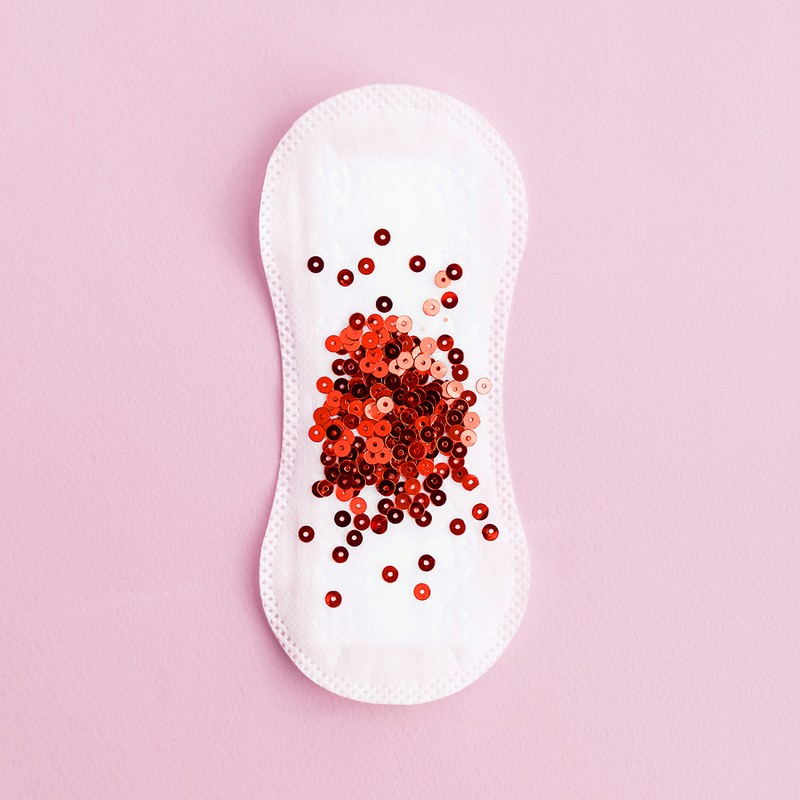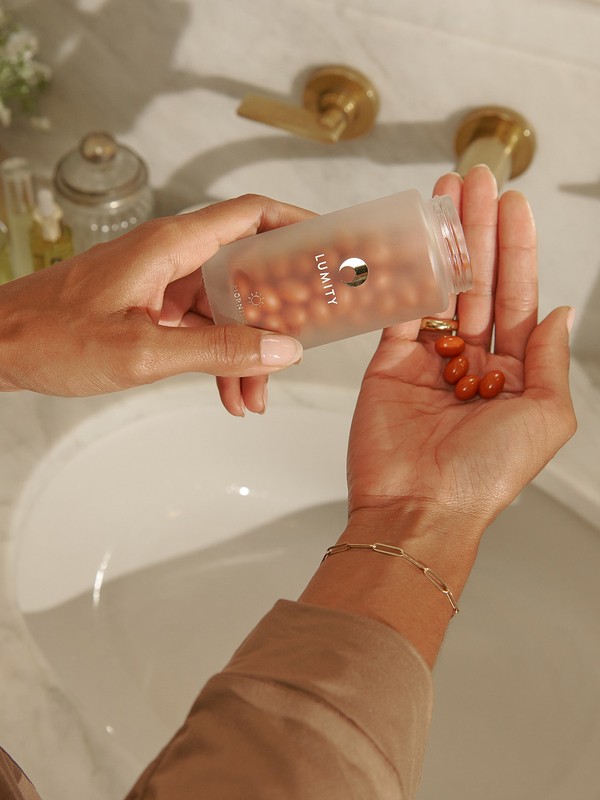What’s Normal When It Comes To Your Period?
The Colour Of Your Blood Matters
“Normal, healthy period blood should be rich-red in colour. However, variations are possible. If your blood is brown, this could be caused by low progesterone levels. Brown blood is essentially old oxidized blood that didn’t make it out of your uterus during your last cycle. To help support your progesterone levels, you may want to consider taking a supplement called Vitex, which is known to re-establish a normal balance of progesterone and hopefully change your period blood to a healthy red. At the same time, light pink blood could indicate low oestrogen levels. Your hormones are made from the food you eat, so low oestrogen is likely due to vitamin and nutrient deficiencies – one of my favourite supplements to assist with oestrogen is black cohosh root. Finally, if your blood is purple in colour, this could be a sign you have too much oestrogen. In this case, black cohosh and DIM, which helps the liver metabolise oestrogen, can help. Always consult with your doctor before taking any supplements – it’s always best to test and not guess.” – Berrion Berry, founder of The Flo Academy and Saalt expert
You May See Some Clots
“Clots are common, but ideally we don’t want to be seeing many, especially clots bigger than the size of a 50p coin. If you are seeing regular clots that are around the size of a 50p coin, it’s worth mentioning it to your doctor just to get things checked over. You can be more prone to clots if you have high oestrogen, thyroid issues, low iron levels, or blood clotting disorders. Depending on what other symptoms you have they may recommend tests or scans to see what’s going on. Of course, it’s always recommend to work with a nutritional therapist or a therapist that specialises in functional medicine too so you can get to the root cause of any issues.” – Jodie Brandman, nutritional therapist and women’s health expert
Blood Consistency Can Change
“In an ideal world, your blood should be flowing easily. However, it can change throughout the duration of your period. For example, as your hormone levels rise, blood can become mixed with general cervical fluid, making it creamier and possibly sticky. This is normal.” – Jodie
It's Important To Remember You’re Unique
“Everyone’s period is different and that is okay. We are all different and unique when it comes to our personalities and physical features, and the same goes for our cycles. Your period might not look like your best friend’s period. What’s important is that you find your normal. While there’s a lot of confusion out there, your period should arrive every 25-36 days (the average is 28-30 days) and you should bleed for three to seven days.” – Jenny Longoria, CEO of The Period Guru and Saalt expert
Not Every Month Will Be The Same
“It’s important to note we will all have abnormal periods sometimes. One month you might have a painful period, heavier bleed, or start early or late. If this is not your normal pattern, don’t fret. Observe this change and take note on your next period. It’s only when this deviation in your period persists for three cycles in a row that a pattern is created, signifying there is a hormone imbalance at play. By charting your cycles with an app such as Kindara, one can catch a deviation in the menstrual cycle and catch a hormone imbalance early before serious symptoms manifest.” – Jenny
You’ll Go Through A Pack Of Tampons
“During your period, you’ll lose anywhere between 25-80ml of blood, with the average woman losing 50ml of blood. To put this into perspective, 80ml of blood is equivalent to around 20 tampons per cycle. If you are unsure how much blood you are losing, try using a menstrual cup, which makes it easy to track your flow.” – Jenny
It Should Be Pain-Free
“Mild cramping on the first few days is common, but for the most part, your cycle should be pain-free. If you have to take a few ibuprofens on the first day and the pain goes away that is fine, but ideally you want to get to a place where you don’t need painkillers. Period pain isn’t normal and can indicate something is going on.” – Jenny
There Are Different Types Of Bleeding
“A true period takes place when there is a rise in oestrogen, which causes a surge of a hormone called LH, prompting ovulation, then a rise and fall of progesterone. However, if you are having a breakthrough bleed (which happens mid-cycle), this isn’t a proper period. During a breakthrough bleed, ovulation doesn’t occur – instead, the uterine lining builds under the effects of oestrogen and when it gets too heavy it sheds. If you are on the contraceptive pill, this is also not a real period. This withdrawal bleed is triggered by a drop in synthetic hormones, which causes a bleed. Proper period blood should be bright and cranberry coloured and the consistency of maple syrup.” – Jenny
Missed Periods Aren’t Normal
“If you’re not having a period, this is a big sign your body needs some TLC. It could be down to the fact you’re not ovulating and have low progesterone levels, or it could be down to conditions like PCOS or absolute burn out. Adequate nutrition and stress management is vital here – managing our stress is so important for healthy progesterone levels.” – Jodie
*Features published by SheerLuxe are not intended to treat, diagnose, cure or prevent any disease. Always seek the advice of your GP or another qualified healthcare provider for any questions you have regarding a medical condition, and before undertaking any diet, exercise or other health-related programmes.
DISCLAIMER: We endeavour to always credit the correct original source of every image we use. If you think a credit may be incorrect, please contact us at info@sheerluxe.com.






